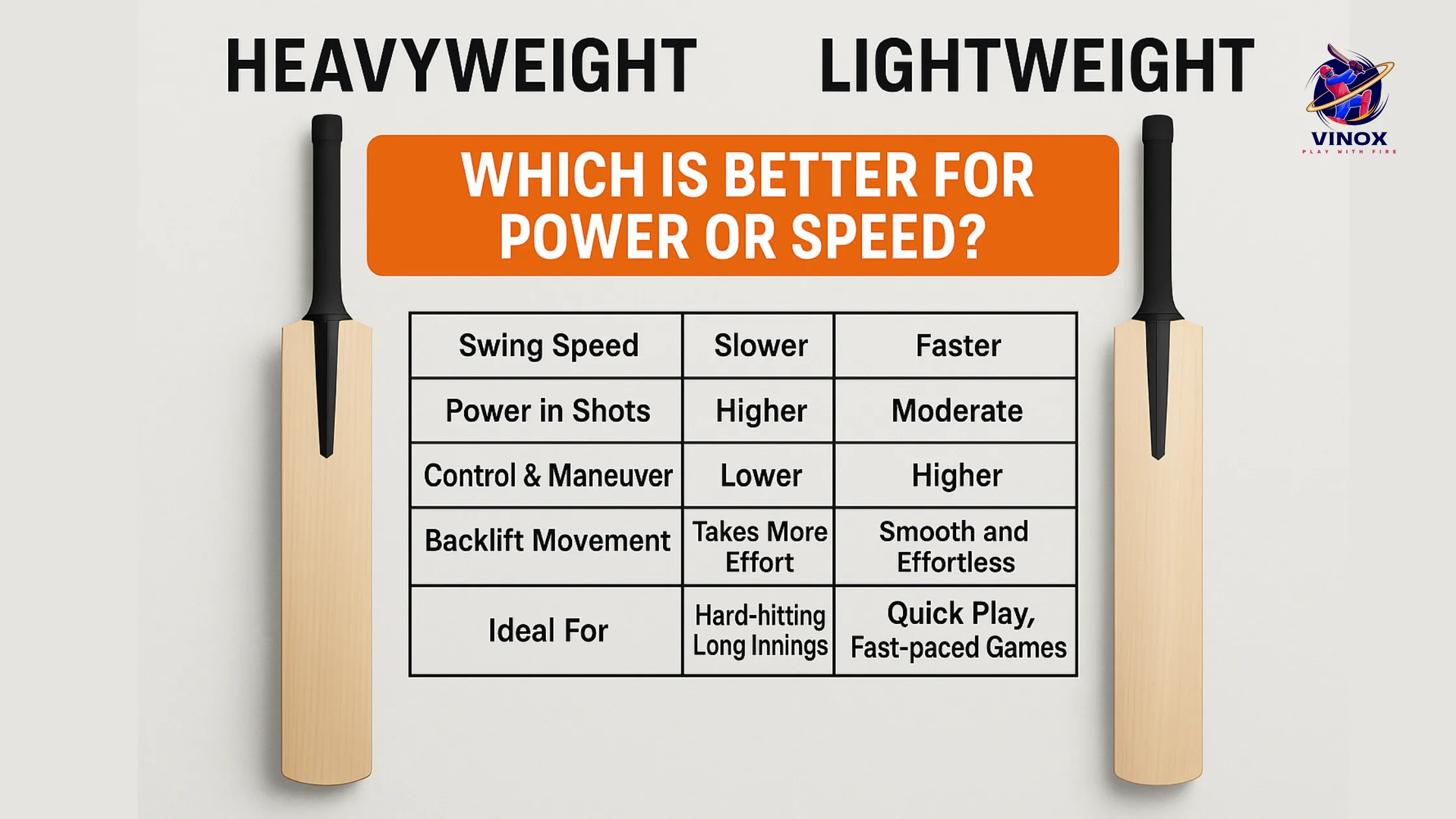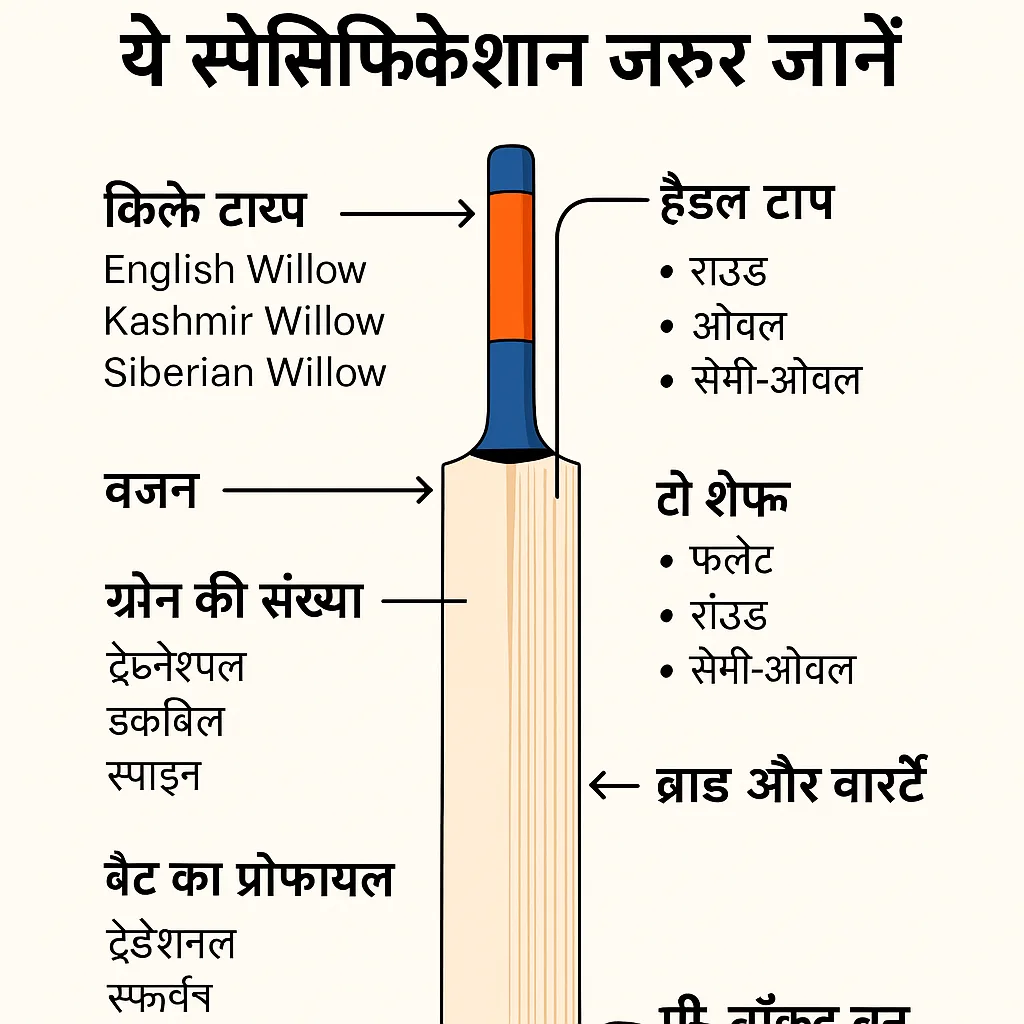🏏 Heavyweight vs Lightweight Cricket Bats: Which Is Better for Power or Speed?
Introduction
Choosing the right cricket bat is a crucial decision for every player. One of the most debated aspects of bat selection is weight—should you go for a heavyweight cricket bat or a lightweight cricket bat? In this guide on Heavyweight vs Lightweight Cricket Bats, we explore how your choice impacts your shot power, speed, balance, and overall performance. In this blog, we’ll break down the key differences, pros and cons, and how to choose the best bat based on your playing style.
Looking for your ideal bat? Check out our Vinox Cricket Bats Collection for lightweight and heavyweight bats crafted for champions.
What Is a Heavyweight and Lightweight Cricket Bat?
➤ Lightweight Bat
Weight Range: Usually 2.6 lbs to 2.9 lbs
Ideal For: Quick wrist players, beginners, and T20 format
Main Advantage: Easy swing, fast reaction time, and enhanced timing
➤ Heavyweight Bat
Weight Range: Typically 2.10 lbs to 3 lbs or more
Ideal For: Power hitters, experienced players, and Test/ODI cricket
Main Advantage: More punch and raw power in every shot
💥 Power vs Speed: What's the Core Difference?
| Feature | Heavyweight Bat | Lightweight Bat |
|---|---|---|
| Swing Speed | Slower | Faster |
| Power in Shots | Higher | Moderate |
| Control & Maneuver | Lower | Higher |
| Backlift Movement | Takes More Effort | Smooth and Effortless |
| Ideal For | Hard-hitting, Long Innings | Quick play, Fast-paced games |
🏆 When Should You Use a Lightweight Cricket Bat?
T20 Cricket: Quick reflexes are crucial.
Young or Beginner Players: Easier to handle and master.
Wrist Players: Enhances flicks, cuts, and quick rotations.
Players Under 5’6″: Offers better balance and bat flow.
💪 When Should You Use a Heavyweight Cricket Bat?
Test Matches or ODIs: Suitable for playing long innings.
Strong Upper Body Players: Can handle the weight with ease.
Power Hitters: Helps clear boundaries with minimal effort.
Dry Pitches: Offers solid ball contact and less vibration.
🔧 How Bat Weight Affects Your Game
Timing – Lightweight bats help in quicker shot execution.
Endurance – Heavy bats can be tiring over long innings.
Shot Selection – Heavier bats are better for front-foot play; lighter bats support wristy strokes.
Risk of Injury – Heavier bats, if not handled correctly, can cause muscle strain.
📌 Expert Tips to Choose the Right Bat Weight
Hold the Bat with One Hand (Extended for 10–15 seconds): If it shakes, it’s too heavy for you.
Try Shadow Batting: Mimic your shots to feel the swing and flow.
Always Consider Bat Balance: Some heavyweight bats feel lighter if perfectly balanced.
⭐ Real Match Scenarios
MS Dhoni used a heavier bat to hit long sixes even with mistimed shots.
Virat Kohli prefers a moderate to light bat for timing and wrist work.
T20 Players often use lighter bats to generate quick bat speed.
✅ Pros and Cons Summary
✔️ Lightweight Bat
Pros:
Quick handling
Ideal for short formats
Reduces fatigue
Cons:
Less shot power
Not suitable for aggressive play
✔️ Heavyweight Bat
Pros:
Powerful shots
Durable for longer formats
Good ball punch on slow pitches
Cons:
Slower swing
Requires good strength and technique
Final Verdict: Which One Should You Choose?
If you’re a beginner, play T20 matches, or rely on timing, a lightweight bat will serve you better. But if you’re a power-hitter, have the strength, and play in longer formats, then a heavy bat can give you the edge you need.
Ultimately, it’s not about what’s heavier or lighter—it’s about what suits your game best.





 No products in the cart.
No products in the cart.